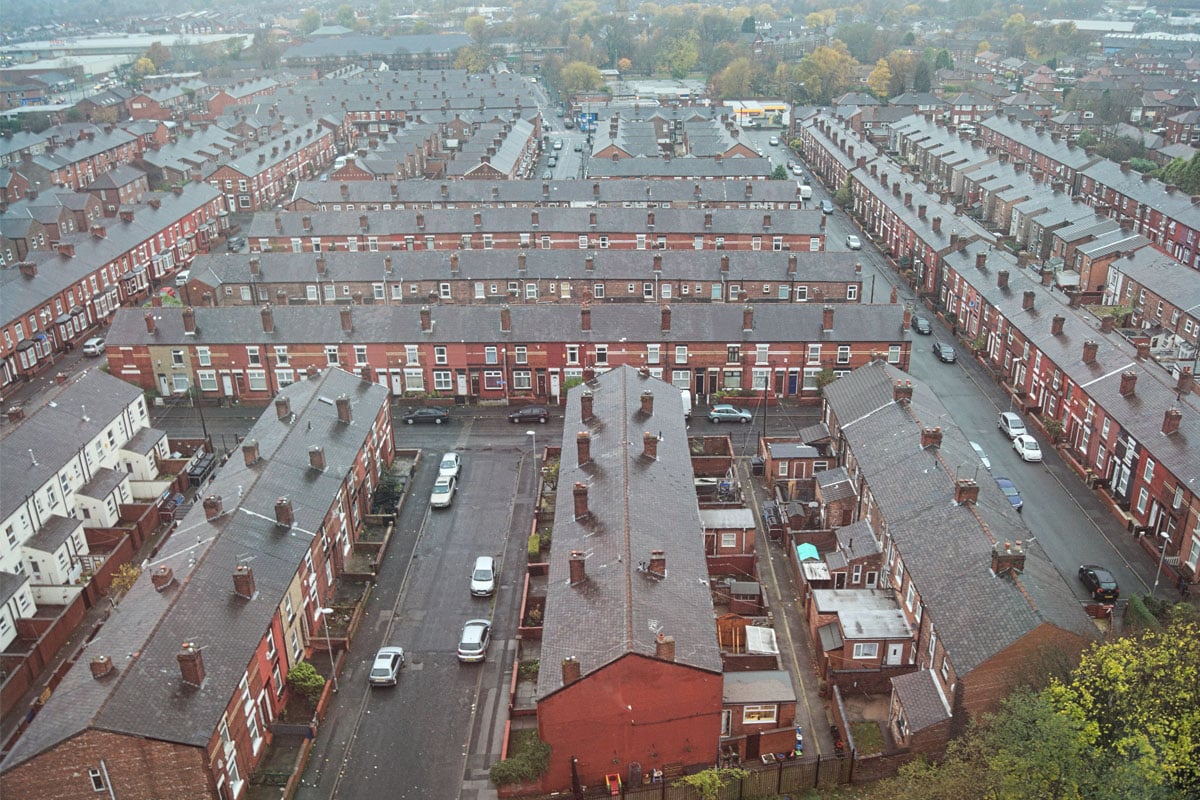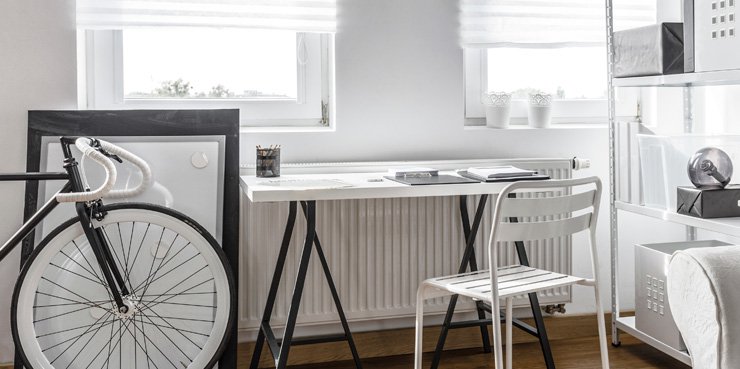The 8 Best UK Property Investment Strategies in 2025
The UK property market is known for its resilience and long-term growth potential. However, there are many ways to make money and build wealth in property and investors can take many paths, from a long-term buy-and-hold approach with a simple residential buy-to-let to a short-term trading strategy of flipping houses.
There is no 'right' strategy and it's important to understand that different strategies perform optimally at various points in the market cycle and in different cities and towns across the country.
For instance, a strategy that works well in a fast-growing city like Manchester, might not be as effective in a rural location like Somerset or the most expensive parts of London.
Right now the UK property market is characterised by a unique combination of high yields and recent high mortgage interest rates. This scenario presents both opportunities and challenges for investors as the best buy-to-let locations change frequently.
For cash buyers and those able to move fast, they can secure some wonderful off-market properties, suitable for a range of property investment strategies.
For investors relying on mortgages, but have a long-term plan, it is predicted that inflation will continue, wage growth will increase and house prices will continue to escalate in many areas, providing a strong return on investment with capital growth.
In the meantime for investors buying to rent, the current high yields offer attractive returns. Even London is performing well with high rental yields, especially compared to recent years.
Choosing the right strategy is crucial for your success as a property investor. Your choice should align with your financial goals, risk tolerance, available time, and expertise. Let's explore the best UK property investment strategies that can lead you to success in 2025.

-
by Robert Jones, Founder of Property Investments UK
With two decades in UK property, Rob has been investing in buy-to-let since 2005, and uses property data to develop tools for property market analysis.

Traditional Residential Buy-to-Let
What it is and how it works:
Traditional Buy-to-Let involves purchasing a residential property with the intention of renting it out to tenants. Investors earn income through monthly rent payments and potentially benefit from capital appreciation over time. Tenants are usually individuals, a couple or a family. Tenants could be social housing tenants, students, company lets or working tenants.
Advantages:
- The simplest property strategy. Relatively straightforward to understand and implement
- Steady monthly income from rent providing consistent cashflow
- Potential for long-term capital growth if you buy and hold
- Easy to find qualified letting agents to manage one property or a portfolio in any location.
Disadvantages:
- Tax treatment for how mortgage payments are considered can make it less profitable for landlords owning properties in their name instead of a limited company
- Properties require ongoing management and maintenance
- Lower cashflow and average rental yields compared to some other rental strategies
- Income from capital growth only comes when you sell the property limiting portfolio growth
What type of investor is this strategy best suited for:
This strategy is ideal for investors looking for a stable, long-term investment with regular income. It's suitable for both beginners and experienced investors and is suitable for landlords who wish to be hands-off and use managing agents to manage the process of finding tenants and managing the tenancy ongoing.
Common FAQs:
- How much deposit do I need for a buy-to-let mortgage?
Typically, you'll need a deposit of 25% or more of the property value. For example, a £200,000 property would require a £50,000 property. Remember there are some parts of England that still have very low average property prices, so your deposit in these locations would be lower.
- Is there a minimum yield for buy-to-let to consider?
Generally, no. However, if you are considering cash flow, mortgages and covering all your costs, you will likely need a minimum yield of 6%+ for most properties. The value of the property and the size of your mortgage will need to be considered to work out your exact target rental yield.
- How do I choose the right location for a buy-to-let property?
Some investors like the property to be local to where they live or work. Others target the highest growth potential or rental income. This landlord checklist will be helpful for you to select the right criteria for your perfect location.
Houses of Multiple Occupation (HMO)
What it is and how it works:
HMOs are properties rented out to three or more tenants who are not from a single household but share facilities like bathrooms and kitchens. Investors often purchase a single property and then convert it by developing the layout to add more bedrooms, communal lounges or bathrooms. Student properties have historically been known as HMOs however they are also common for working tenants in high-value areas, where the cost of living is very high and therefore renting a property with other people helps to reduce the costs. In recent years the standard of houses of multiple occupation has become high with luxury accommodation, design and finishes helping to attract groups of tenants paying a premium.
Advantages:
- Higher rental yields compared to traditional buy-to-let
- Reduced impact from void periods (as not all rooms are likely to be empty at once)
- Greater monthly cashflow
Disadvantages:
- Often harder to raise mortgage finance unless you are an experienced landlord
- Requires extension upfront investor to develop a property and make it suitable for a HMO
- Additional planning and licensing requirements
- Requires extensive and specialist management with fewer options for high quality experienced letting agents in smaller towns and cities
What type of investor is this strategy best suited for:
HMOs are best for experienced investors who are comfortable with more complex property management and have the time and resources to handle increased tenant interactions and regulatory compliance.
Common FAQs:
- Do I need a licence for a HMO?
In many cases, yes. Large HMOs (5 or more tenants) always require a license, while smaller ones may need licensing depending on the local authority. Here is an example for Chester City Council.
- Do I need planning permission for a HMO?
In many locations this is now a requirement, due to something called Article 4. Here is an example for Manchester City Council.
- Do I need a specialist mortgage for a HMO?
HMO mortgages often require larger deposits and may have higher interest rates due to the perceived increased risk. Speak with a specialist broker that understands this part of the property market, as a good broker will be able to help you find the right product for you.

Buy-Refurbish-Refinance (BRR)
What it is and how it works:
The BRR strategy involves buying a property below market value, renovating it to increase its value, and then refinancing to release equity. This equity can then fund further investments and build a portfolio.
Advantages:
- Potential for rapid portfolio growth
- Ability to recycle initial investment helps when starting a property business
- Continuously adding value to your portfolio and improving the quality of housing
- Adds value with increased equity and improved rental income
Disadvantages:
- Requires significant initial capital to pay for the purchase deposit and refurbishment
- Requires development experience to make the most of the projects
- Harder to find below-market-value properties when house prices and the market are growing
What type of investor is this strategy best suited for:
BRR is suited to investors with some experience in property renovation and a good understanding of local property markets so they buy and refinance at the right time. It's ideal for those looking to grow their portfolio quickly and with the skills to successfully negotiate discounts and manage renovation projects.
Common FAQs:
- How long does a BRR project take?
A BRR project can take anywhere from 3 to 12 months, depending on the extent of refurbishment required. It is important to plan for an extended project as overruns can cost significantly if you haven't anticipated increased holding costs.
- What types of properties are best for BRR?
Structurally sound properties but in need of cosmetic updates or modernisation often work well for BRR. This helps keep the costs of the development down and ensures the refurbishment can be done quickly. Properties that require planning permission (although good for their own reasons) are not ideal for simple buy-refurbish-refinance projects as the extra time can slow down portfolio growth.
- How do you fund BRR projects?
Options include cash, mortgages, bridging loans, joint ventures or a combination of these. There is more complexity with these types of projects and specialist financing options are often considered.
Flipping Houses
What it is and how it works:
House flipping involves purchasing a property, renovating it quickly, and then selling it for a profit. The goal is to buy low, add value through strategic improvements, and sell high within a short timeframe, typically 3-12 months. This strategy is all about negotiation and timing.
Advantages:
- Potential for higher returns on investment than standard buy to let
- Can be scaled up or down based on available capital and time
- Extended periods of time with lots of activity (development) and little activity (selling) which can fit busy investor's workloads if they time it correctly
Disadvantages:
- Requires significant upfront capital and/or access to short-term financing
- Higher risk due to market fluctuations and potential for unexpected renovation costs
- Time-intensive during refurbishment requiring close project management
- Can be a more stressful process with many unknowns through the purchase, refurbishment and sale process
What type of investor is this strategy best suited for:
House flipping is ideal for investors who have a good understanding of property values, renovation costs, and local market trends. It suits those who can manage projects effectively and have the contacts or skills themselves to carry out each of the specialised trades.
Common FAQs:
- What is the average return on a house flip?
Returns can vary widely, but successful flippers often aim for a 20-30% return on investment after all costs. If you are doing one flip project a year with an average capital invested of £200k, this could return £40-£60k per project before tax. If you get the timing wrong and overpay and undersell, as well as a refurb cost increase, then all profits can also easily be zero or even negative. It is a high-risk high-reward approach to property.
- How do I find suitable properties for flipping?
Look for undervalued properties through estate agents, auctions, online property portals, and networking with local property professionals. You need a mixture of properties that require the right level of development for your skill set and experience, whilst also having a motivated seller.

Serviced Accommodation & Holiday Lets
What it is and how it works:
This strategy involves purchasing properties to rent out on a short-term basis from one-night stays to a couple of months. Serviced accommodation is appealing to business travellers looking for their own space instead of a hotel, and holiday lets are set up to attract holidaymakers and families looking for a home-from-home stay. These properties are usually fully furnished, all bills included and compete directly with hotels for guests looking for somewhere with more flexibility and space.
Advantages:
- Potential for much higher returns compared to long-term rentals
- Flexibility to use the property yourself when not rented
- Ability to adjust pricing based on seasonal demand
- Property maintains a high standard due to regular maintenance and more frequent inspections
Disadvantages:
- Specialist and more intensive management required
- Higher running costs (cleaning, utilities, etc.)
- Potential for seasonal fluctuations in income with some months having very low occupancy
- Subject to changes in tourism trends and local regulations around licensing and planning
What type of investor is this strategy best suited for:
This strategy suits investors who are comfortable with more hands-on management or are willing to employ a specialist management company. It requires patience and planning with the cashflow as income will likely fluctuate throughout the year.
Common FAQs:
- Do you need specialist lending?
Yes, a quality broker will be able to find the find mortgage products for you, but be careful as the wrong product can invalidate your insurance and these mortgages can be significantly higher interest rates than standard buy-to-let as some high street banks consider them to be commercial financing.
- How do I market my holiday let?
Popular platforms include Airbnb, Booking.com, and VRBO, as well as local tourism websites.
Property Crowdfunding
What it is and how it works:
Property crowdfunding allows investors to buy shares in a property or a portfolio of properties, through a regulated online platform like the London House Exchange. Returns come from annual rental income if the collective owners of the property asset vote to pay dividends and/or capital appreciation when the collective owners vote for the property to be sold on the open market.
Advantages:
- Low barrier to entry - buy-to-let investors can often start with small amounts with some platforms having a £1,000 minimum amount required
- Provides exposure to the property market without direct ownership
- Diversification across multiple properties is easily possible as you can buy small amounts in a mixed portfolio that can include different locations, different property strategies like residential HMO, buy-to-lets, holiday lets or commercial retail.
- No hands-on management is required, the platform manages all operational aspects of the portfolio
Disadvantages:
- Less control over exiting the investment. The ability to sell the shares is controlled by specific timelines so it is not a liquid option.
- Return on investment may be lower than direct property investment if you compare like for like, due to the extra operating costs of running and managing a regulated platform to oversee the portfolio
- Relatively new concept with evolving regulations that could see more restrictions or regulations in the future on the process of types of properties included in the portfolios
What type of investor is this strategy best suited for:
Property crowdfunding is ideal for those with limited capital who want exposure to the property market. With the average house price in England at £306,000 it's not cheap to get on the housing market. Property crowdfunding provides investors an alternate to direct ownership. It's also suitable for investors looking to diversify their property portfolio without the hassle of direct management, giving access to new locations and even off-market property opportunities.
Common FAQs:
- How liquid is property crowdfunding?
Liquidity varies by platform. Some offer secondary markets for selling shares, but it's generally less liquid than publicly traded stocks, as the secondary markets may only open at specific times of the year. However, this market is changing all the time and some platforms are aiming to make the ability to sell your property shares much quicker.
- How do I choose the properties?
When you start building a property portfolio with a real estate platform, you get to choose individual properties, which match your specific goals of location or yields, or you can select a blended portfolio that already has a mix of assets.
Purpose Built Student Accommodation (PBSA)
What it is and how it works:
PBSA involves investing in accommodation specifically designed and built for student tenants. This can range from studio apartments, 1 bedroom apartments to cluster flats with shared facilities. These often have specific planning for use only for the student market and are often placed in parts of the city with close proximity to their main university buildings.
Advantages:
- University towns often have consistently high occupancy rates for tenants each year, providing a steady flow of demand.
- The cost of the asset in PBSA is often lower than local traditional houses, as the properties are designed for sharing, the cost of a studio apartment will be lower than a 2-bedroom terrace house. This entry cost helps to improve the gross rental yield and often provides higher yields than standard buy-to-let.
- The new purpose-built nature can mean lower maintenance costs.
- Potential for longer tenancy agreements with some educational institutions signing multi year leases in order to secure ongoing accommodation for their students.
Disadvantages:
- Highly dependent on the success and reputation of local universities. If a university is performing brilliantly, you will see demand increase for local accommodation; conversely, the same is true.
- In some larger cities you may face competition from university-owned accommodation.
- It is difficult to predict future demand and there is potential for oversupply in some markets.
- Selling the properties is limited to selling to other investors as purpose-built student accommodation is not designed for homeowners. This could be limiting when you sell, as it depends on the demand from other landlords at the time.
What type of investor is this strategy best suited for:
PBSA is suitable for investors looking for high-yielding opportunities and who do not mind a specialist property niche. It's ideal for those with capital to buy properties in cash with no mortgage finance and who have a long-term investment horizon.
Common FAQs:
- How does PBSA differ from converting a standard house for students?
PBSA is purpose-built to meet specific standards and often offers amenities like on-site gyms or study areas. The locations are typically in the heart of the student part of a city where traditional housing options might not be available. PBSA often has lower entry costs compared to other property investments. In contrast, the cost to buy, refurbish, and refinance a property to a suitable student HMO (House in Multiple Occupation) standard can be significant.
- How stable is the PBSA property market?
While generally stable due to consistent student numbers, it can be affected by changes in university policies, visa regulations for international students, and shifts towards online learning.

Property Sourcing
What it is and how it works:
Property sourcing involves finding and negotiating property deals on behalf of other investors. Sourcers are paid a fee for successfully finding, negotiating and managing the purchase on behalf of the property for the investor buyer client. They work on behalf of the buyer and are part of an ombudsman scheme like the Property Ombudsman.
Advantages:
- Low start-up costs. You don't need fixed overheads and a high street presence like many estate agents.
- Potential for high returns relative to time invested. Many buy-to-let investors will pay 1-3% of a property purchase price to secure valuable off-market or off-plan properties that have been pre-negotiated.
- Can be a stepping stone to other property investment strategies that help you build your own portfolio, as you create a network of the best property opportunities available to buy.
Disadvantages:
- Your income can be irregular and dependent on closing deals. With an average deal taking months to find and secure and then months to complete the purchase, it could be 6+ months before you receive your first income from this strategy if you are starting from the beginning.
- Requires excellent negotiation and networking skills
- You need to comply with estate agency regulations and keep up to date on any new requirements
- Competition from other property sourcers can be great, especially in the major cities as many compete over the best local opportunities.
What type of investor is this strategy best suited for:
Property sourcing is ideal for those with strong local market knowledge and networking skills. It suits individuals who want to enter the property market but may not have the capital for direct investment.
Common FAQs:
- Do I need any qualifications to become a property sourcing agent?
While no specific qualifications are required, you do need to register with HMRC for anti-money laundering supervision and comply with relevant regulations, like insurance and membership of a property ombudsman.
- How much can you earn as a property sourcing company?
Earnings vary widely but typically range from 1-3% of the property purchase price per deal. For a large development or high-value area this can be significant. 2% of a £500,000 property purchase can be £10,000 in buyer commission from one completed property transaction.
How to Develop your Property Investment Strategy
1. Assess your current skill set and level of property experience
Be honest with yourself. Evaluate your knowledge of the property market, financial management skills, and ability to handle property-related tasks. This will help you choose a strategy that aligns with your capabilities.
2. Assess your budgets
Next consider your available capital, borrowing capacity, and risk tolerance. Different strategies require varying levels of financial commitment. Take your time to consider carefully which strategy aligns best with your current and future goals and don't over extend financially with a risky strategy.
3. Pick your area
Research potential investment areas. Look for locations that support your chosen strategy, considering factors like local demand and supply, ho is the local economy and property prices performing, what is rental demand like, and are there any future development plans.
This can make the difference between a flip strategy for example or a longer term buy and hold rental.
4. Your business plan
A successful property career hinges on knowing your numbers in detail. Map out the financials of your strategy over a multi-year timeline, not just for the initial purchase. Review your property checklist and establish clear criteria for any property you're considering sourcing or buying. In real estate, there's a famous saying: 'You make your money when you buy.' This underscores the importance of buying at the right price and avoiding overbidding.
Conclusion
Successful property investment often involves a combination of strategies and continual adaptation to market conditions. Start with a strategy that suits your current situation, but be prepared to be flexible and evolve your approach as you gain experience and as the market changes.
By carefully considering these strategies and developing a well-thought-out investment plan, you'll be well-positioned to succeed in the UK property market in 2025 and beyond.
